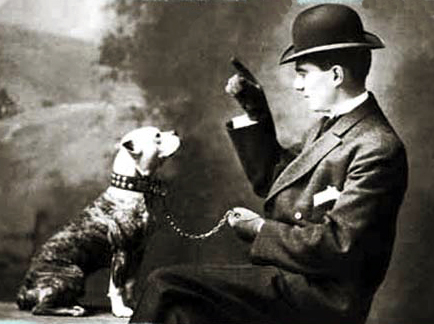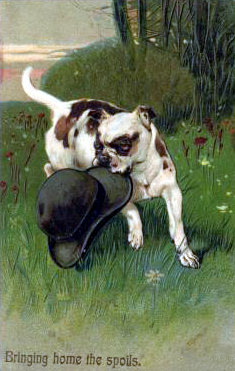Month: January 2007
TLC
Architectural Ramblings
Bonus fact: Robinson also said Angelenos should plant lots of jacaranda trees along the streets, so you can thank him for all those purple blooms.
First of all, here’s our featured house at 2045 S. Oxford Ave. from 1907. Note the stucco.

And here are some of the neighboring homes:



All things considered, I’d have to say this stretch of Oxford is a one of the more interesting areas that I’ve visited. The neighborhood is mostly intact and there’s a 1920s-style church at the end of the block next to the Santa Monica.
Now for one of the homes in the 1700 block of Oxford Avenue, which is a little funkier. Recall that the precise address listed in The Times couldn’t be located.
And for the vehicle of the week, here’s a stretch limo I saw at the Los Angeles County Arboretum in Arcadia:

lmharnisch.com
lmharnisch.blogspot.com
e-mail: lmharnisch (AT) gmail.com
Engine Co. 10 Weeps
Speaking of City Hall
A Fatal Can of Beans
 Jan. 5, 1907
Jan. 5, 1907Los Angeles
Charles Edward Abbott, 23, of Artesia had lived his entire life in California without seeing snow except on faraway mountains and suggested that Mabel Carter, 28, and her father, Henry, 63, join him on a trip to Cucamonga Canyon.
The Carters, who once owned a grocery story at 10th Street and Alvarado before moving to Ontario, and Abbott went to Cucamonga, expecting to spend several days there.
During their stay, they ate a can of pork and beans that had been purchased in September and stored with other provisions in a commissary box under an orange tree in the yard outside the cabin.
Henry Carter was the first to fall ill. Assuming some other cause, he encouraged his daughter and Abbott to take a hike while he stayed behind. They were too ill to go far, however, and returned to the cabin, where they ate another can of pork and beans.
The three victims returned to the Carter home in Ontario. Mabel Carter was the first to die, tended by Abbott, who was next, followed by Henry Carter.
Four physicians attending the victims were unable to explain what killed them.
The Mayor Departs From His Prepared Remarks
 Jan. 4, 1907
Jan. 4, 1907Los Angeles
During a dinner at Levy’s, Mayor-elect Arthur C. Harper stood before 200 members of the Municipal League and their friends who were eager to hear what he planned for his incoming administration.
Harper took his typewritten speech from his pocket, showed it to the crowd, and laid it aside. Harper said he changed his mind
Good Doggie! Fight the Power!
January 4, 1907
Los Angeles
Patrolman Sanders arrived at 2521 West Temple Street today to investigate complaints that a bull terrier had been a naughty dog. 
He was met at the house by a woman who insisted the dog was quite friendly and most quiet. “I’ll show you,” said the woman, who opened the door…and with one bound the pooch leapt upon the patrolman, tearing his coat sleeve and trouser leg. When Sanders drew his revolver, the fearless canine took the muzzle in his mouth and began a protracted game of tug o’ war with the interloper.
Sanders kicked the dog away, and the woman gathered the pup up in her arms and bore him away, weeping hysterically, crying “I’ll have you fired from the force you brute!” To which the tattered Sanders replied “Go ahead—do anything but please don’t let that dog out again!”


The Times does not report on any further outcome of this encounter.
For Sale on EBay
Some Nice Boring Statistics
Jan. 2, 1907
Los Angeles
Some diligent soul at The Times dug through the number of marriage licenses and divorces and put together a small story that traced the city





